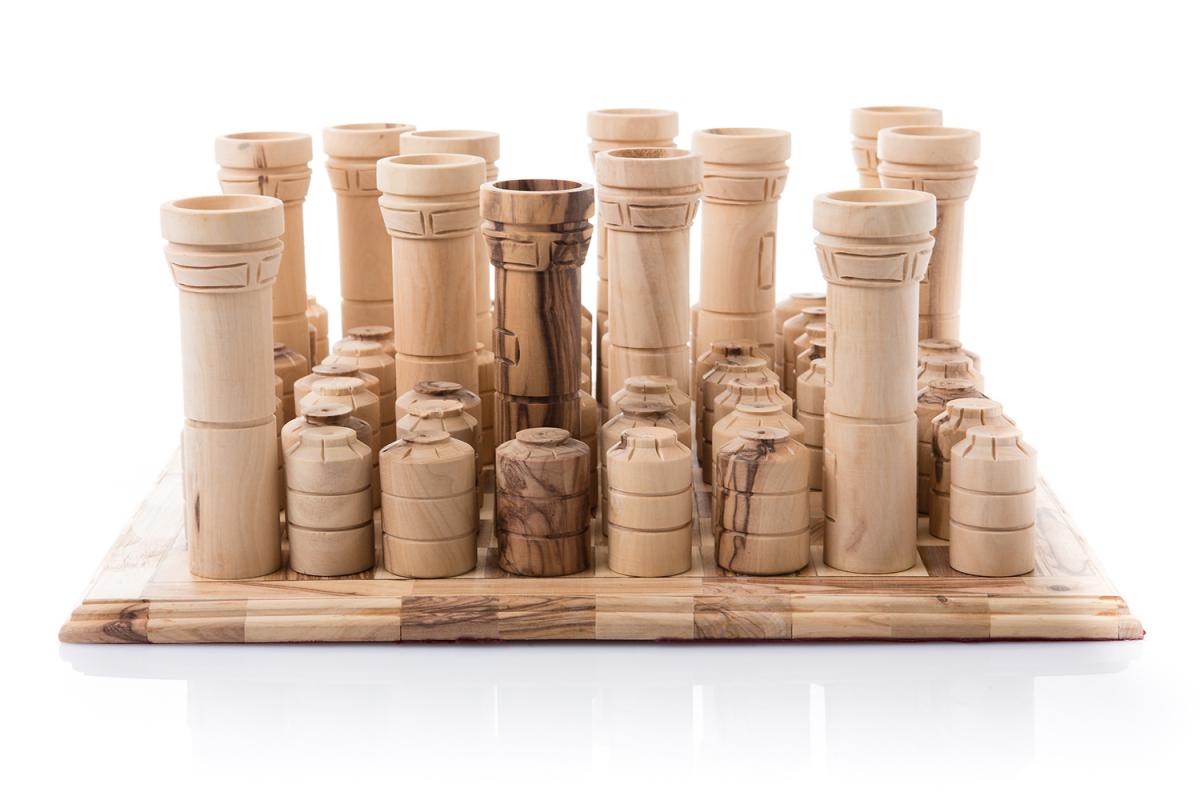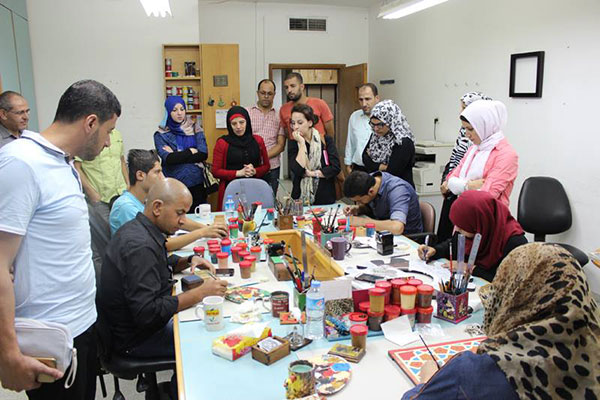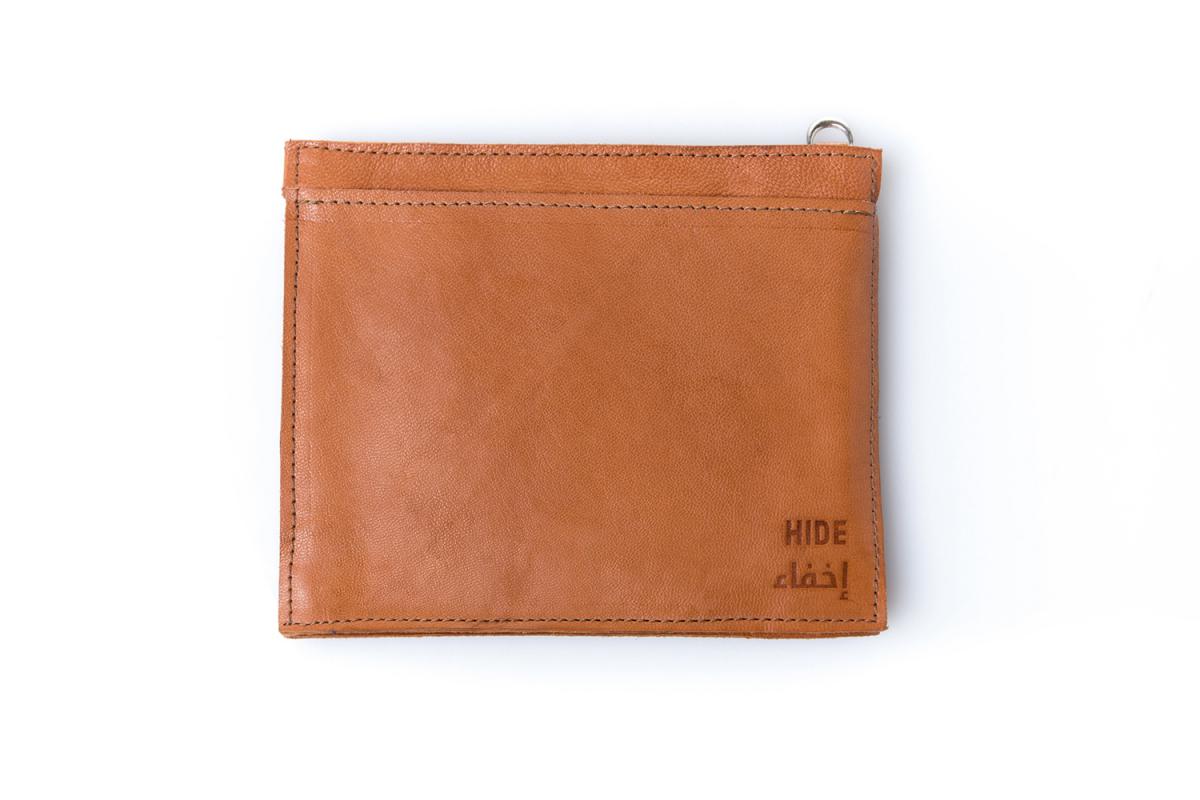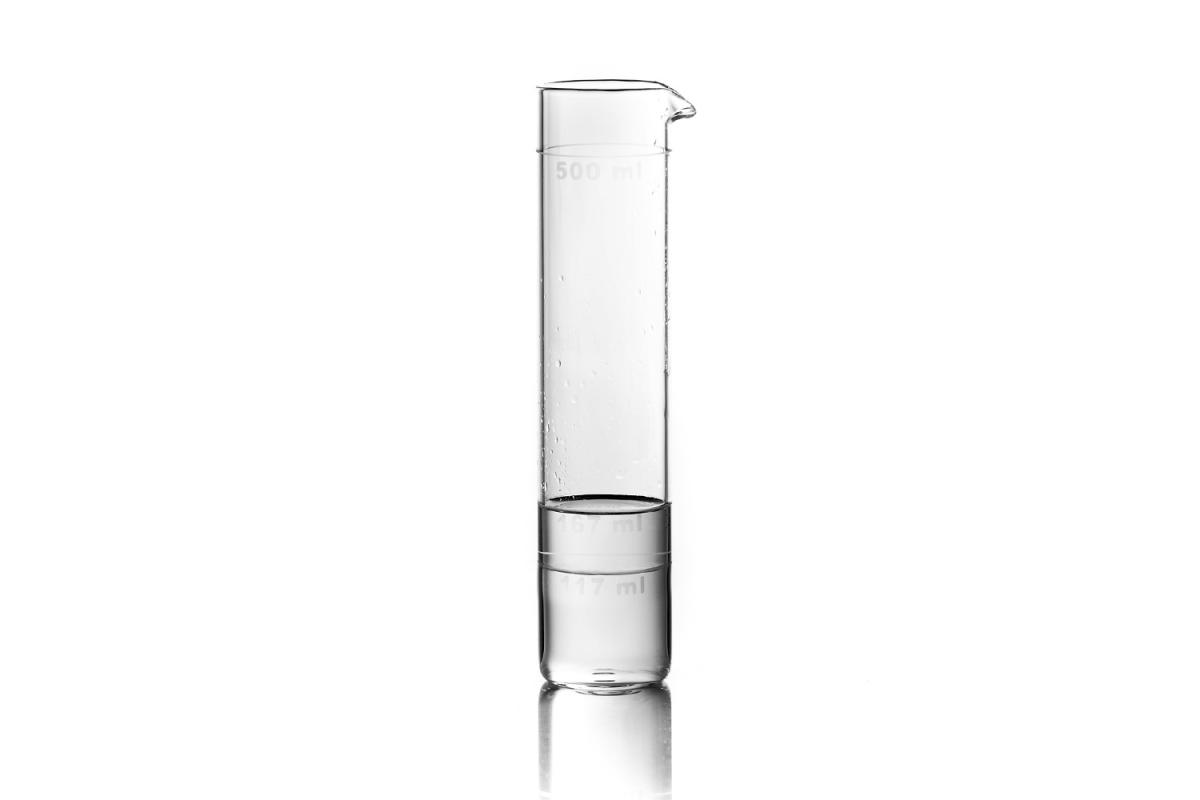Reaching Beyond Borders
A Dutch foundation is bringing Palestinian art and design—and the stories behind them—to the world outside.
The Israeli–Palestinian conflict is easily one of the most intractable and divisive issues of our time, one that has attracted the attention and participation of nearly the entire world. With so many stridently voiced opinions and so much bloodshed, not only in and around the disputed territories, but indeed across the globe, it can be easy to forget the human faces behind the headlines, those whose everyday life is overshadowed by the hatred and violence.
Disarming Design from Palestine is a contemporary design label producing artefacts that bear witness to what it means to live in Palestine in these days, and while it may be impossible not to be political there, the label strives to narrate the human experience through its products. In the words of visual artist and graphic designer Mohamed Abusal, who coordinates the group’s activities in Gaza, ‘I incorporate my political views within the objects I make, and through the Disarming Design platform they are being promoted and sold in the rest of the world so people can hear us from the other side of the wall.’

An alternative chess set commenting on the Israeli-Palestinian conflict, with watchtowers and water tanks as pawns occupying every square on the board, resulting in a permanent deadlock with no winners. Designed and produced by Majed Abu Farha, Nader Rishmawi, Beith Fahour and Mark Jan van Tellingen. (Photo: Celine Callens)
The platform’s online catalogue, which after five years of activities contains more than 50 products, resonates with explicit or metaphorical references to the realities of daily life in Palestine. Items include a glass measuring cup which demonstrates the unequal distribution of water between the inhabitants of the West Bank and Israel, a leather wallet that reveals and conceals different identities, a chess set with watchtowers and water tanks as pawns, a T-shirt with ‘I am an Arab’ calligraphed in the shape of a fingerprint, or a pillow case with screenprinted Arab poetry to protect dreams.
Although several of the designs deal directly with the wall, the checkpoints, the violence and so on, each object also expresses the designer’s cultural pride. As architect Ibrahim Alhindi puts it, ‘through Disarming Design, we are encouraged to do more to show to the world not only the current atrocious situation but also to radiate our identity in a positive way.’
You seem to enjoy a good story
Sign up to our infrequent mailing to get more stories directly to your mailbox.Dutch designer Annelys de Vet developed the context for this platform some six years ago after working on the Subjective Atlas of Palestine, a project developed in direct collaboration with several local artistic organisations. She was impressed by the richness of local craft traditions and the quality of the artistic scene, but was surprised that there was hardly any collaboration between the local artisans and designers. In response to a call from, a global NGO committed to a world with less poverty, she began to organise what would become Disarming Design, organising workshops in several areas of Palestine.

One of Disarming Design from Palestine’s yearly workshops where new products are proposed and developed (Gaza city, 2014). The designers and artisans in Gaza investigate existing production techniques to determine the feasibility of larger-scale production. (Photo: Mohamed Abusal)
Many of the participants perceived this suggested collaboration as entirely innovative. Interior designer Ghadeer Dajani, now the platform’s production manager, can testify to this: ‘Before I attended my first create shop in 2015, I didn’t think too highly of our local crafts production. It felt as if it was restricted to traditional embroidery and to the usual products in ceramics and glass and so on. We always saw the same things over and over again at the market. There was never someone who would do something different or revolutionary. Disarming Design made us aware that we have this heritage and that we could do something new with it. That it is Palestinian, a part of our identity and that we can be proud of it.’
The antagonism between Israelis and Palestinians has complex historical, religious and political roots, and is one of the world’s most complex and controversial conflicts. Can design and crafts make a hint of progress where politicians and negotiations have failed?
The artisans, for their part, were equally sceptical. Saad Ghanem, a leather craftsman who has produced several objects for the Disarming Design collection, was initially quite resistant to the idea of working with designers. ‘It took me some time to overcome these sentiments. But after a while it turned out to be very beneficial for all of us. I definitely have developed my ideas thanks to the way these designers are working, and I have taught them, through my techniques, different ways of doing things.’
Though de Vet has managed to bring these two communities closer together and let them discover how beneficial they can be for each other, the platform still faces many other obstacles. Just as any other country, Palestine is subject to a global economic reality. Large-scale, low-cost foreign production has led to the closure of many local craft studios and artisanal factories. Even their traditional scarfs are mostly produced in China. Abusal says that the Israeli siege also makes it impossible to import necessary raw materials into Gaza, and many small-scale studios have gone out of business. Ghanem adds that because of the occupation it is difficult to develop one’s skills, due to the lack of training facilities and educational opportunities.
Disarming Design addresses this challenge with a two-part structure. First, there is a not-for-profit company in Palestine which is responsible for organising the yearly workshops and following up with the production of the resulting artefacts. To date, more than 70 Palestinian and international designers have participated in five workshops, with a sixth taking place in autumn 2017 in a Palestinian refugee camp in Jordan. Fifty of the 80 designs from those workshops are currently in production and are manufactured in collaboration with more than 30 local crafts factories and individual artisans including woodcutters, ceramicists, embroiderers, printmakers, glass blowers and soap makers. Second, there is a Dutch foundation which handles international promotion, distribution and sales. They reach out to potential customers through online sales as well as a variety of events, exhibitions and pop-up shops. Overall turnover for 2016 was over €10,000 (US$11,920), a figure that is expected to be exceeded in 2017.

A leather travel pouch that can reveal or conceal different identities, designed to hold two passports and additional documents that Palestinians need to cross checkpoints and borders. Jordan is the only country in the world to which Palestinians can travel without a visa. Designed and produced by: Moniek Driesse, Saad Ghanem, and David Juan Ortiz. (Photo: Celine Callens)
Ghanem explains that this rather complex organisational structure is vital because of the complicated reality of this particular region of the Middle East. ‘Because of the occupation, it is a real problem for us to export our products. Everything is stopped at the border. But even if I managed to send my products abroad, I wouldn’t be able to get paid. Israeli laws make it impossible to pay me with Visa or through foreign money transfers. The Disarming Design platform has helped me to overcome these problems, as they don’t experience the same export restrictions. They can also collect the money and make payments to us.’
Notwithstanding these specific economic contributions, the platform is still too small to act as a significant revenue source for all Palestinian designers and artisans involved. Dajani says that currently they cannot significantly contribute to the financial sustainability of any of the artisans or designers, but that their ultimate objective has to be to support low- and middle-income businesses. ‘We are quite unique, and we are needed. The lack of real economic growth has reduced opportunities for an increasingly educated Palestinian population, so people are starting to look at us as an important step towards a less vulnerable financial position. To my knowledge there are few organisations that support them in selling their products outside Palestine.’
It would be too optimistic to say that Disarming Design manages to overcome these barriers, but Abusal and others are convinced that this collaborative approach can provide a way to reopen closed crafts shops in the future. For the present, the platform is succeeding in creating a symbolic economy, enabling customers all over the world to support the Palestinian cause, giving them a real boost of confidence.

This measuring cup demonstrates the unequal division of water for Palestinians and Israelis. Palestinian consumption on the West Bank is about 70 l (18.5 gal) a day per person, whereas Israeli daily per capita consumption is at about 300 l (79.25 gal). In some rural communities Palestinians survive on barely 20 l (5.3 gal) per day. The cup lacks traditional measurement values, indicating the constant calculations Palestinians face concerning water consumption: ‘If I do the dishes, can I wash my clothes as well?’ (Photo: Celine Callens)
According to the former executive director of Disarming Design, ecological space designer Mohammad Saleh, the most important achievement of the platform lies in the fact that it shows the Palestinian people as human beings with a rich culture, putting them in a respectful light while giving them broad exposure. ‘Since the very first moment that we started working together, we have been looking at our country in a totally different, confident and hopeful way.’ He maintains, despite the problems they face, Palestinian artists are using the reality of their daily life as a source of inspiration. ‘Now we can spread our stories using creative, productive and positive thinking.’
The first five years have been inspirational to many. A unique design platform has been created from scratch in what easily could be called one of the most problematic regions in the world. Disarming Design from Palestine is providing insight, empathy, opportunities, learning possibilities, and so much more. Above all it is a tool for all those, within and outside Palestine, who want to express that no individual and no community, wherever in the world, should be kept under oppression and occupation. It will be the next five years, however, that shall determine if this design initiative is capable of effectively altering the situation of those oppressed or if it is just another spin at the wheel.

